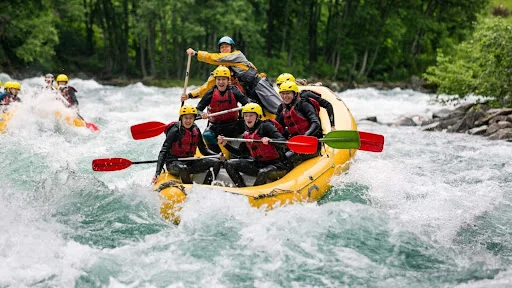There’s no award for getting to the top of the climbing wall first. No gold medal for being the loudest voice in the team. That’s the point. Outdoor activity centre don’t hand out shiny prizes. They hand out something subtler-a shift. In confidence. In understanding. In how young people move through discomfort and come out smiling.
These centres dot the UK like hidden classrooms. Tucked behind trees. Beside lakes. Near fields where signal drops and silence grows. They’re not a step back from learning-they’re a step outside it. And for many young people, they’re the only chance to learn without pressure.
It starts with a bus ride. A list of names. A bag packed with everything except the one thing someone will forget. But as soon as the laces are muddied, something starts to loosen. Not clothes-roles. The quiet kid begins giving directions. The energetic one waits their turn. The ones who usually lead begin listening instead.
More Than Just Adventure:
On the surface, these centres look like thrill factories. Zip lines stretching into trees. Canoes that wobble too much. Ropes courses suspended like spiderwebs. It all screams excitement. But beneath the noise sits structure.
Every activity is a question disguised as fun. Will you speak up? Will you wait? Can you lead when no one’s watching? Tasks like zorbing or raft building might look like chaos, but they’re designed to reveal how people adapt when things stop going to plan.
There’s intention in every instruction. Climbing walls teaches persistence. Raft assembly shows planning. And even “rescuing a duck from a pipe” says more about group problem-solving than most team meetings ever could.
Safe Doesn’t Mean Easy:
One of the myths about these centres is that they’re soft. Supervised. Sanitised. But safety and challenge aren’t opposites. They co-exist.
Instructors don’t remove fear. They measure it. They let it stretch, just enough, so someone who’s never spoken up before finds their voice at the top of a high ropes tower. Not because they were forced—but because space was made for them to step forward.
And when someone backs out? That’s still a lesson. That fear doesn’t vanish when ignored. That choice matters. That support is not necessarily cheerleading someone on and saying, You can do it, sometimes that support is sitting at the bottom with them until a person is ready to get back in the game.
Built for All Abilities:
The best outdoor activities centre don’t just accommodate differences—they expect it. From wheelyboats that allow wheelchair users to sail, to low-impact challenges where speed doesn’t matter, inclusion isn’t a line on a poster. It’s baked into the design.
Not every task is physical. Some are strategic. Some reward patience over strength. The “Electric Fence” game? It’s a brain puzzle disguised as movement. “Low Ropes”? More about trust than balance.
Everyone brings something. And if the activity’s built right, everyone gets to use it.
Learning, Without the Label:
There’s something about learning without being told it’s learning. That’s what these centres nail. The lessons stick—not because they’re written down, but because they’re felt.
- Science becomes bushcraft: fire needs oxygen, but not too much.
- Maths turns up in “Stepping Stones,” where each move has a cost.
- Communication? That’s “Spider’s Web” in action—loud doesn’t mean clear.
- Empathy grows during “Skis,” when one wrong move resets the whole team.
Without the structure of desks and whiteboards, young people try without fear of being wrong. And in that space, they remember more. Not just what happened, but how it felt.
Centres Across the UK:
Outdoor centres are successful in such areas as Buckinghamshire, Northamptonshire, and Bedfordshire. It is not through their possession of the best kit, but through the ability to trust.
Some offer day trips. Others stretch into full residentials. With bunk beds. Cafeterias that serve food and also jokes and banter along the way. But it’s not about luxury. It’s about leaving the familiar. For many, it’s the first night spent away from home—and that’s where growth sneaks in.
And these sites don’t only serve schools. They welcome scouts, cadets, sports clubs, and even corporate teams or the teachers that rediscover how bad adults are at building rafts.
Conclusion:
What makes outdoor activity centres work isn’t just the activities-it’s the way people move through them. The way of challenge softens resistance. The way silence sometimes says more than shouting ever could.
In a world that rewards speed, these centres reward process. Effort. Co-operation. Quiet and bravery.
They won’t change a person overnight. But they might change how they see themselves.
That’s not just growth. That’s the beginning of something better.









